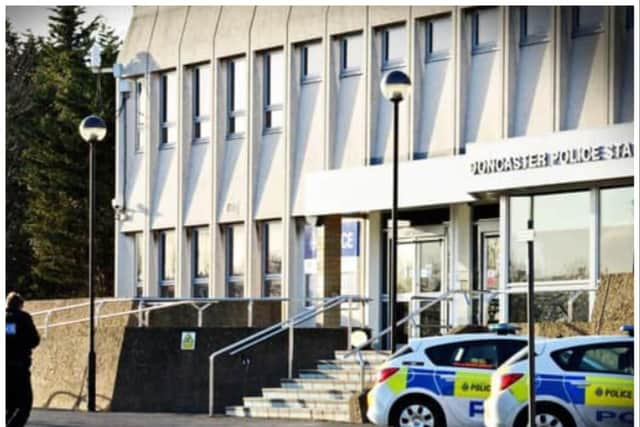RAAC: Now crumbly concrete found at Doncaster Police Station as court shuts
and live on Freeview channel 276
The discovery of RAAC – reinforced autoclaved aerated concrete – has forced buildings across the country including schools, theatres and municipal buildings to close.
Earlier this week it was announced that the court building in College Road has been closed so urgent repair works can be carried out, with cases due to be heard at the court moved elsehwere.
Advertisement
Hide AdAdvertisement
Hide AdNow it has emerged that RAAC has also been found at the adjoining Doncaster Police Station – although reinforcement works have been carried out and the building will stay open.


A South Yorkshire Police spokesman said: “Following a review of all operational police buildings within the South Yorkshire Police estate, we identified the presence of RAAC (reinforced autoclaved aerated concrete) at Doncaster College Road police station.
“Specialist examination of the site has taken place, and reinforcement works have been undertaken to allow the continued safe use of the building.”
Both the police station and the magistrates court were built to the same Brutalist design and using the same materials and were first opened in 1969. They are connected by tunnels leading from the cells in the police station to the docks inside the court.
Advertisement
Hide AdAdvertisement
Hide AdThe court is one of nine sites across the country identified as having reinforced autoclaved aerated concrete within its structure and the site has been shut down with immediate effect.
A spokesman for His Majesty’s Courts and Tribunals Service said: “RAAC presence is rare across the court estate – of over 350 buildings, only nine sites have been identified that currently contain this material, and local staff and judiciary are aware.
"While we have temporarily closed three of these sites, and a single room in another, the remaining buildings have been deemed safe by professionals and continue to operate as normal.
“Sites will continue to be regularly assessed over the coming weeks and months.”
The nine buildings identified as containing RAAC are:
Advertisement
Hide AdAdvertisement
Hide AdDoncaster Justice Centre North (more commonly known as the Magistrates Court)
Bradford and Keighley Magistrates’ Court
Blackpool County Court
Blackpool Magistrates’ Court
Crewe Magistrates’ and County Court
Preston Magistrates’ Court
Queen Elizabeth II Law Courts in Liverpool
Inner London Crown Court
Harrow Crown Court
All courts – bar Preston, Doncaster Justice Centre North, Harrow and a single room in Bradford and Keighley – continue to operate as normal.
Remedial work is now understood to be taking place at the Doncaster site.
The spokesman added: “Checks were carried out on all court sites built between the 1960s and 1980s when RAAC may have been used. Following the finding in Harrow – a 1990s build - we have now extended the scope of this to include all court sites of a similar age.”
Advertisement
Hide AdAdvertisement
Hide AdUsed in construction from the 1950s to the mid-1990s it can become "crumbly" over time and prone to collapse.
The problem was first identified in schools across the country and has since been found in theatres, hospitals and other buildings.